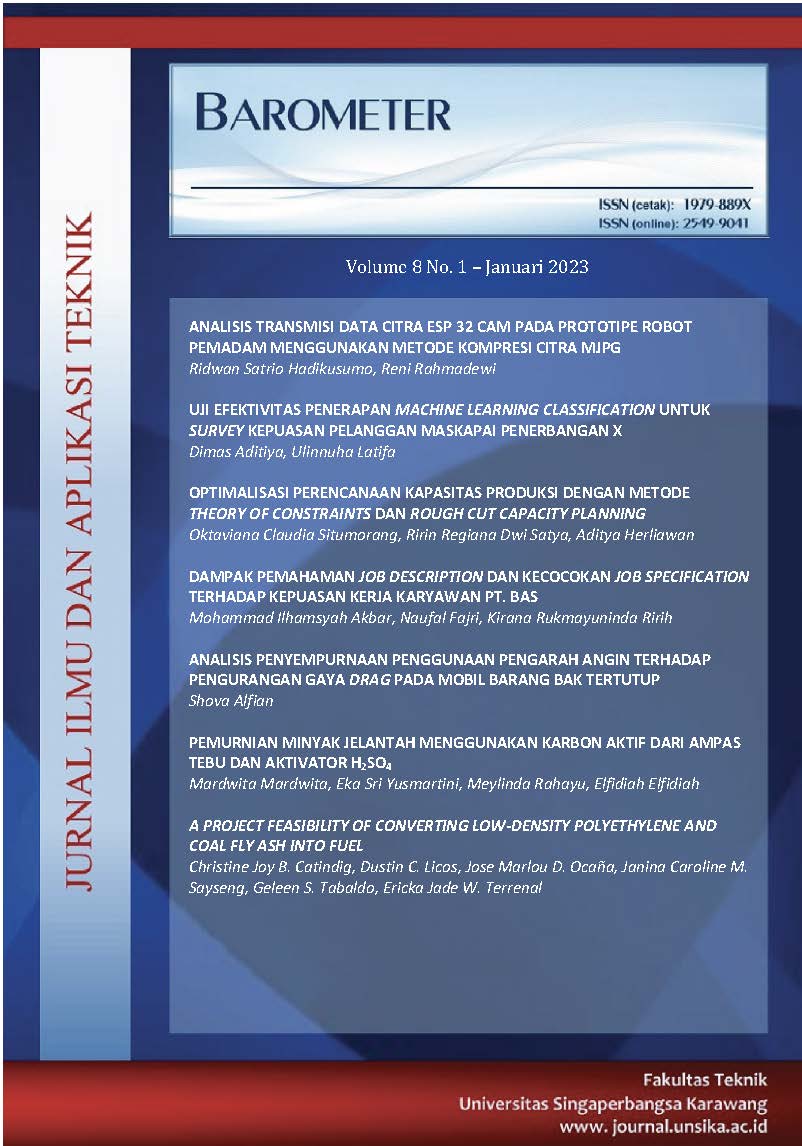CFD ANALYSIS TO IMPROVEMENT THE USE OF WIND DIRECTORS ON BOX TRUCK FOR DRAG REDUCTION
DOI:
https://doi.org/10.35261/barometer.v8i1.7291Abstract
Aerodynamics is one of the factors that can increase the efficiency of fuel consumption. The smaller the drag coefficient, the more efficient the vehicle. The current condition is that there are still many uses/installations of wind guides without taking into account the functions and benefits and there is still no regulation that regulates in detail the use of wind guides. So it is necessary to do this research with the aim of knowing the benefits of using the right wind guide in order to reduce the value of the drag coefficient and it is hoped that this research can be applied in the use of a wind guide. This research was conducted using three types of models at the lowest speed of 20 km/hour and the highest speed of 80 km/hour. The simulation results on trucks with 40 cm lower wind guides, trucks with upper wind guides and trucks with full wind guides using ansys workbench software, show that full wind driven trucks have the smallest Cd value. There was a decrease in the value of the cd from the 40 cm lower wind-directed truck model to the full wind-directed truck model. However, to show more accurate results, it is necessary to conduct a road test and flow of fluid from four sides.
Downloads
References
A. E. Setyono and B. F. T. Kiono, "Dari energi fosil menuju energi terbarukan: potret kondisi minyak dan gas bumi indonesia tahun 2020 - 2050," Jurnal Energi Baru & Terbarukan, Vol. 2, No. 3, pp. 154-162, 2021.
A. Yusuf, Analisa aerodinamika dan optimasi body mobil smart EV generasi tiga dengan menggunakan pemodelan CFD tiga dimensi, Surakarta: Universitas Sebelas Maret, 2017.
A. Capone and G. P. Romano, "Invetigation on the effect of horizontal and vertical deflectors on the near-wake of a square-back car model," Jurnal of Wind Engineering & Industrial Aerodynamics, vol. 185, pp. 57-64, 2019.
R. Setiawan, A. R. Putra and V. P. Fahraini, "Simulasi proses bending ARM rear brake dengan variasi kecepatan pembebanan terhadap stress material menggunakan ANSYS," Barometer, vol. 5, no. 2, pp. 261-266, 2020.
G. Minelli, E. A. Hartono, V. Chernoray, L. Hjelm and S. Krajnovic, "Aerodynamic flow conrol for a generic truck cabin using synthetic jets," Jurnal of Wind Engineering & Industrial Aerodynamics, vol. 168, pp. 81-90, 2017.
M. Nawawi, Analisa computational fluid dynamics (CFD) terhadap pengaru inclining keel pada hambatan dan kecepatan kapal ikan, Surabaya: Institut Teknologi Sepuluh Nopember, 2015.
T. D. Hasugian, Simulasi aerodinamika pada mobil listrik nogogeni dengan menggunakan software ansys fluent, Surabaya: Institut Teknologi Sepuluh Nopember, 2018.
M. Yamin and Suhandono, "Analisis aerodinamika deflektor pada truk mnggunakan software berbasis computional fluid dynamics (CFD)," pp. 1-32, 2014.
J. J. Kim, J. Hong and S. J. Lee, "Bio-inspired cab-roof fairing of heavy vehicles for enhancing drag reduction and driving stability," International Journal of Mechanical Sciences, Vols. 131-132, pp. 868-879, 2017.
S. McTavish and B. McAuliffe, "Improved aerodynamic fuel savings predictions for heavy-duty vehicles using route-specific wind simulations," Journal of Wind Engineering & Industrial Aerodynamics, vol. 210, pp. 1-17, 2021.
Wahyudi, G. Rubiono and H. Mujianto, "Pengaruh bentuk pengarah angin (Deflector) terhadap karakteristik aerodinamis kendaraan niaga (Truck)," Jurnal Rotor, vol. 7, no. 1, pp. 1-5, 2014.
Damjanovic, Darko, Kozak, Drazan, Ivandic, Zeljko, Kokanovic and Mato, "Car design as a new conceptual solution and CFD-analysis in purpose of improving aerodynamics," pp. 1-9, 2015.
m. a. Kurniawan and A. g. Wailanduw, "Karakteristik aliran pada kendaraan menyerupai MPV dengan penambahan rear spoiler," JTM, vol. 3, pp. 261-270, 2014.








